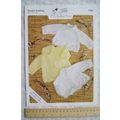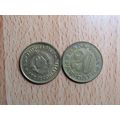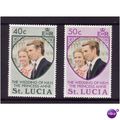Canberra, Australia - Government House / Yarralumla- real photo postcard c.1960s
- Condition : Used
- Dispatch : 2 Days
- Brand : None
- ID# : 143196619
- Quantity : 1 item
- Views : 463
- Location : United Kingdom

- Seller : justthebook (+1703)
- Barcode : None
- Start : Sat 26 Sep 2015 10:22:13 (BST)
- Close : Run Until Sold
- Remain : Run Until Sold
More Listings from This Seller view all
Seller's Description
- Postcard
- Picture / Image: Government House, Canberra, ACT [Australian Capital Territory] - real photo type
- Publisher: C. Serangman
- Postally used: no
- Stamp: n/a
- Postmark(s): n/a
- Sent to: n/a
- Notes / condition:
Please ask if you need any other information and I will do the best I can to answer.
Image may be low res for illustrative purposes - if you need a higher definition image then please contact me and I may be able to send one. No cards have been trimmed (unless stated).
------------------------------------------------
Postage & Packing:
Postage and packing charge should be showing for your location (contact if not sure).
No additional charges for more than one postcard. You can buy as many postcards from me as you like and you will just pay the fee above once. Please wait for combined invoice. (If buying postcards with other things such as books, please contact or wait for invoice before paying).
Payment Methods:
UK - PayPal, Cheque (from UK bank) or postal order
Outside UK: PayPal ONLY (unless otherwise stated) please. NO non-UK currency checks or money orders (sorry).
NOTE: All postcards are sent in brand new stiffened envelopes which I have bought for the task. These are specially made to protect postcards and you may be able to re-use them. In addition there are other costs to sending so the above charge is not just for the stamp!
I will give a full refund if you are not fully satisfied with the postcard.
----------------------------------------------
Text from the free encyclopedia WIKIPEDIA may appear below to give a little background information (internal links may not work) :
*************
Government House, Canberra, commonly known as Yarralumla, is the official residence of the Governor-General of Australia. It is located in the suburb of Yarralumla, in the City of Canberra, in the Australian Capital Territory.
The house is set amid 54 hectares (133 acres) of parkland. The suburb of Yarralumla, which has grown up around Government House, is one of Canberra's most expensive residential areas and also the site of many foreign embassies.
At Government House, the governor-general presides over meetings of the Federal Executive Council, and holds investitures to present honours within the Order of Australia and associated Australian military, bravery and civil decorations. The governor-general also receives visiting heads of state and other dignitaries and the credentials of ambassadors to Australia, and entertains people from all walks of life.
The Queen of Australia, Elizabeth II, and foreign heads of state stay at Government House when on official visits to Canberra.
Between 1901, when the Commonwealth of Australia came into being, and 1927, the Parliament of Australia met in Melbourne — the capital city of the state of Victoria. Most government offices were located in Melbourne as well and Government House, Melbourne served as the governor-general's official residence.
When the area that was named as Canberra in 1913 was chosen to be the site of the future capital city of Australia — and 910 square miles (2,358 square kilometres) of land excised from the state of New South Wales (NSW) to form the Australian Capital Territory — the Commonwealth Government compulsorily acquired Yarralumla Station, a large pastoral property dating from the 1830s. Yarralumla's existing brick house, which had begun life as a rural homestead/family home, was subsequently renovated, enlarged and transformed into a vice-regal residence.
Due to the First World War and the adverse post-war economic conditions that prevailed in its immediate wake, the federal government did not move to Canberra from Melbourne until 1927. It was only at this time that the governor-general began to use Yarralumla as his official seat, albeit on a limited basis at first. Between 1927 and 1930 the governor-general continued to live principally at Melbourne's Government House, residing at Yarralumla only during those periods of the year when the Parliament of Australia was sitting. In 1930, Melbourne's Government House was finally returned to the Victorian State Government for use by the Governor of Victoria.
American architect Walter Burley Griffin included provision for an impressive, purpose-built Government House in his plans for the modern city of Canberra. It was to be placed in a dedicated government precinct and provided with scenic views taking in Canberra's landscaped open spaces and central lake; but, as with so much of Burley Griffin's planning for the national capital, financial considerations intervened and the envisaged work never eventuated.
The core part of the current vice-regal structure began life as a double-gabled Victorian-era house, erected in 1891 by grazier Frederick Campbell at what was then the hub of a working sheep station. Previously, the site taken up by Yarralumla house was occupied by an elegant, Georgian-style homestead with shady verandahs on two sides, a shingle-clad roof and rows of French windows replete with shutters. That single-storey homestead had been lived in continuously by the interrelated Murray and Gibbes families from 1837 through to the end of 1881.
Augustus Onslow Manby ""Gussie"" Gibbes (1827-1896) had purchased Yarralumla sheep station and its homestead from his brother-in-law, (Sir) Terence Aubrey Murray, on 1 July 1859 for approximately £20,000. (The purchase price was to be paid in 12 instalments; see NSW Land Titles' Office, old system deeds, book 81, number 300.) ""Gussie"" Gibbes made improvements to Yarralumla and as well as running extensive flocks of sheep on the estate, he bred horses for the Indian market and collected rents from tenant farmers. He also planted decorative shrubs and trees among the native eucalypts that dotted the homestead's curtilage. These centred on an imposing deodar cedar which still stands to the house's south at the time of writing.
Gussie Gibbes' state of health declined as the 1880s dawned. He decided to sell his rural holdings and travel overseas for an extended period with his niece (and housekeeper) Leila Murray. So, on 8 November 1881, Frederick Campbell — who had been managing the neighbouring Duntroon sheep station for his uncle and aunt — was able to purchase Yarralumla from his friend Gibbes for £40,000. (Campbell made a £10,000 down-payment on the property, discharging the rest of the purchase price by instalments in a process that took him until 1911 to complete: see NSW LTO, old system deeds, book 607, number 942.)
Unlike Gibbes, Campbell was a married man with a growing family that needed to be accommodated. He partially demolished the old Yarralumla homestead in 1890 and, the following year, finished building a three-storey, red-brick house on the site. NSW Government land-title records show that Campbell borrowed money from Gibbes (and from another one of Gibbes' brothers-in-law, Augustus Berney, a Sydney-based Customs Department officer) to help pay for the building project. In 1899, Campbell razed what was left of the original homestead, replacing it with a substantial brick extension to the main house. An impressive wooden shearing shed was also built by Campbell in the 1890s to service Yarralumla's flocks of sheep. The shearing shed is situated near the banks of the Molonglo River, below the Scrivener Dam.
The Commonwealth Government bought Yarralumla from Campbell in 1913. It decided to use Campbell's vacated home as a temporary residence for the Governor-General of Australia. Consequently, another three-storey block was erected behind the existing one and a new entrance portal was constructed on the southern frontage. A stable block was constructed to the west of the structure and cottages built for staff. Since the 1920s the building has been extended and refurbished several more times; but the basic structure of the 1891 house can still be seen clearly when viewed from the south.
Lord Stonehaven was the first governor-general to live in the house, being in attendance at the opening of the new provisional Parliament House (now Old Parliament House) in Canberra in 1927. Australian-born Sir Isaac Isaacs was the first governor-general to live at Government House for an entire term. The house remained small when compared to Government House in Melbourne, and successive governors-general and their wives complained about its inadequacies as a place for official entertaining. Plans for a much grander — and permanent — vice-regal establishment were never implemented as a consequence of the economic hardship caused by the Great Depression of the late 1920s and 1930s. The grave crisis posed to Australia's security during the Second World War also halted further work.
In 1927, the Duke and Duchess of York (later King George VI and Queen Elizabeth) stayed in the house when they visited Canberra to open the Provisional Parliament House. Prior to their arrival, extensive improvements were made to ensure that the building would provide a standard of accommodation appropriate for members of the Royal Family. These improvements were overseen by the then Commonwealth Architect, John Smith Murdoch. The interiors of the refurbished house, along with much of their furniture, were designed by Ruth Lane Poole, of the Federal Capital Commission. They are in keeping with the prevailing ""stripped-classical style"", with more formal interiors provided for the official reception rooms, and a lighter scheme prevailing in the private residential rooms. (Lane Poole was also responsible for the interiors of The Lodge — the official residence of the Prime Minister.)
A private sitting room was built in 1933 at the request of Lady Isaacs over the south entrance porch, which looks south across the gardens to the Brindabella Ranges and the foothills of the Australian Alps beyond.
In 1939, Government House was again extensively renovated and expanded in the ""stripped classical style"" typical of Canberra's early public buildings, to a design by E. H. Henderson, Chief Architect of the Works and Services Branch of the Department of the Interior. Lord Gowrie lived in the house at this time, and it was not regarded as being large enough to meet the demands made of it. The 1899 Campbell extension was therefore demolished and a new, more substantial replacement erected. The drawing room was made larger, while more bedrooms were installed on the second storey, and a ""state entrance"" built on the northern side. Further alterations to the existing building were also made, adding a nursery on the third-storey and extending the dining room.
All these changes to Yarralumla had been spurred by the impending appointment of the Duke of Kent as the next governor-general. He was due to succeed Lord Gowrie in early 1945. However, the Duke died in an aircraft crash in Scotland in 1942 while on active service in World War II, and his elder brother, the Duke of Gloucester, was appointed in his place. The changes were completed in time for the arrival of the Duke and Duchess of Gloucester.
In the 1990s, a new chancery building, designed by Roger Pegrum in a ""stripped classical style"" design, was constructed to house the offices of the Official Secretary to the Governor-General and associated administrative staff.
Some critics[citation needed] have said that the current Government House lacks distinction and architectural unity, and proposals have been put forward from time to time to construct a new Government House.[citation needed] None of these proposals are currently known to be under active consideration by the authorities.[citation needed]
Government House is situated in the south-western part of Canberra, in the suburb of Yarralumla. It is located on the shores of Lake Burley Griffin on a north-south orientation and is reached by Dunrossil Drive — named after the only Australian governor-general to die in office, Lord Dunrossil. At the entrance to the grounds are iron gates, decorated with the Royal and Commonwealth coats of arms, and a gatekeeper's cottage. The curving drive leads to the house through ornamental lawns and gardens.
Government House consists of a central brick block, erected by Frederick Campbell in 1890-1891 on the remnants of an 1830s' homestead. The house was enlarged in 1899 and again during the 1920s. Further additions were made to it in the 1930s and 1940s. All of these structures were rendered with a layer of cement and painted cream. The roof tiles are green.
The ""State Entrance"" to Government House is located on its eastern facade, and is protected by a porte-cochere, within which there is a set of steps leading up to the main entry doors.
Running along the centre of the house is the wood-panelled ""State Entrance Hall"", lined with Australian artworks and furniture, including a study by multiple Archibald Prize-winner Sir William Dargie for the so-called ""Wattle Portrait"" of Elizabeth II, Queen of Australia and a study for a portrait, again by Dargie, of Prince Philip, Duke of Edinburgh.
Official ceremonies, such as the swearing-in of Cabinet ministers, the presentation of honours and the holding of receptions, take place in the drawing room, which is hung with paintings by Australian artists and contains examples of early Australian furniture.
The drawing room leads through to the private entrance, which is composed of a series of rooms leading from the south façade (with views of the Brindabella Ranges) through to the ""State Entrance Hall"". Again, these rooms are hung with paintings by Australian artists and contain antique furniture and other items of interest.
Beyond the private entrance are a morning room and a small dining room. This small dining room features a series of paintings by Australian indigenous artists. These rooms lead back to the ""State Entrance Hall"".
On the lakefront side of the house is the ""State Dining Room"". It features a large bay window overlooking Lake Burley Griffin, which leads out on to a terrace. Also on the ground floor, and commanding views of the lake, are the governor-general's study, where the vice-regal incumbent works and receives visitors, and a sitting room with an attached vestibule which links with a number of offices and service rooms.
The upper floors of Government House contain the governor-general's private residence and guest rooms.
The furnishings and decoration of Government House represent a wide spectrum of Australian artists and craftspeople, ranging from colonial times to the present day and expressing a rich variety of styles. It also houses a large collection of artworks by Australian indigenous artists. Cultural institutions including the National Gallery of Australia, the National Library of Australia and The Australiana Fund, have lent much of the furniture and art objects gracing the house.
Artists with works displayed in Government House include E. Phillips Fox, Tom Roberts, Sir Arthur Streeton, Sir William Dargie, Margaret Preston, Rupert Bunny, Nicholas Chevalier, W. B. McInnes, Elioth Gruner, Sir Lionel Lindsay, Sir Bertram Mackennal, Sir Hans Heysen, Lloyd Rees, Fred Williams, Arthur Boyd, Sir Sidney Nolan, Leonard French, Justin O'Brien, Ray Crooke, John Dowie, Johnny Warangkula Tjupurrula, Margaret Olley, Pro Hart, Yala Yala Gibbs Tjungarrayi, Charlie Tjararu Tjungarrayi and Paddy Japaljarri Sims.
Note: A comprehensive account of the genesis of Yarralumla appeared in 1988, under the title Gables, Ghosts and Governors-General (edited by C. D. Coulthard-Clark and published by Allen & Unwin, in conjunction with the Canberra & District Historical Society). See also the article ""Yarralumla: the Gibbes Years"", published in the Canberra Historical Journal (New Series, Number 48), September 2001, pages 11–31, for more detailed information about the 1837-1911 period of Yarralumla's history.
type=real photographic (rp)
country/ region/ city=canberra
period=post-war (1945 - present)
postage condition=unposted
number of items=single
size=standard (140x89mm)
Listing Information
| Listing Type | Gallery Listing |
| Listing ID# | 143196619 |
| Start Time | Sat 26 Sep 2015 10:22:13 (BST) |
| Close Time | Run Until Sold |
| Starting Bid | Fixed Price (no bidding) |
| Item Condition | Used |
| Bids | 0 |
| Views | 463 |
| Dispatch Time | 2 Days |
| Quantity | 1 |
| Location | United Kingdom |
| Auto Extend | No |



 for 1 item(s)
for 1 item(s)

















